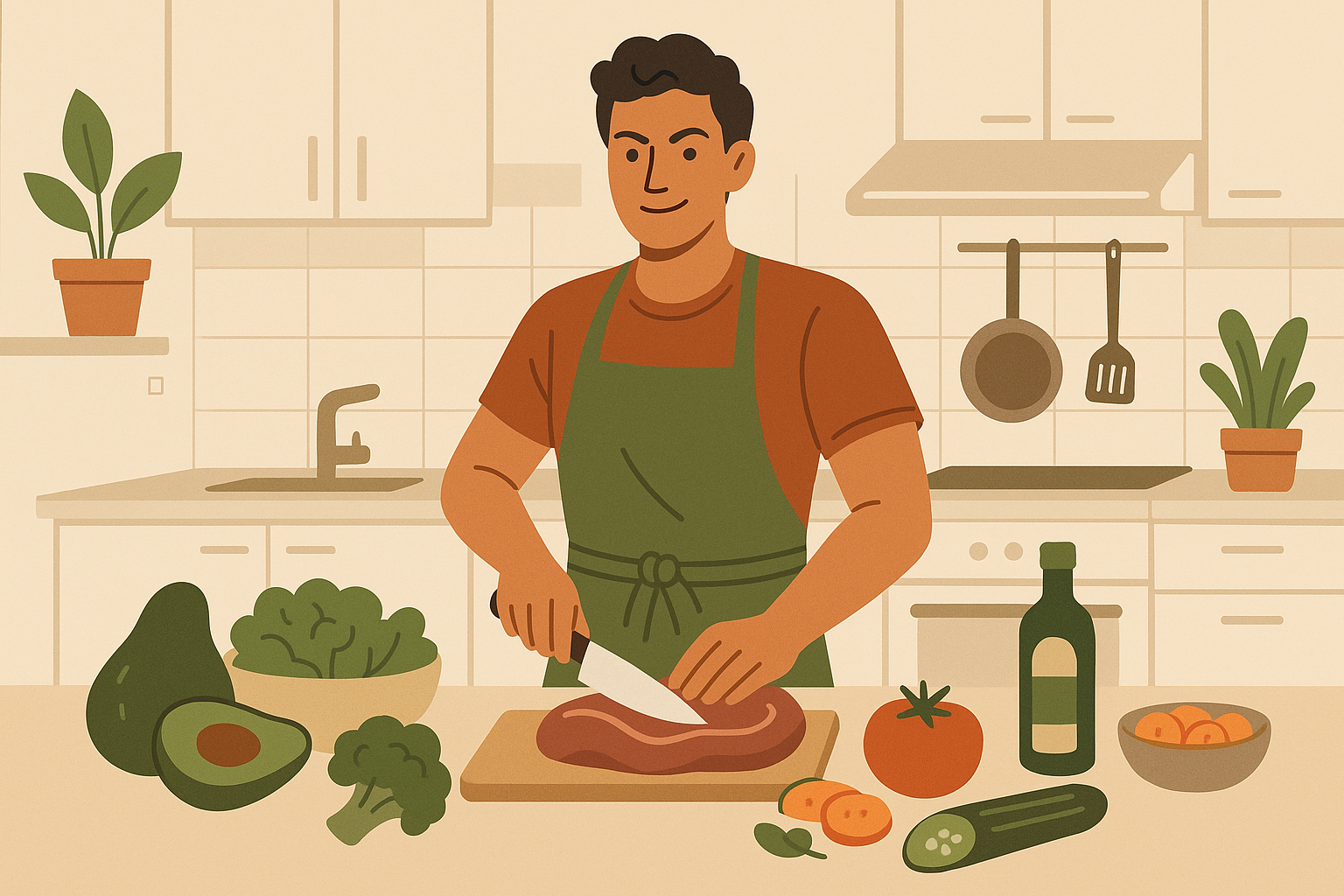Paleo Diet Meal Plan Secrets That Actually Work (And Why Most People Get It Wrong)

Table of Contents
- Why Your Current Paleo Approach Might Be Sabotaging Your Results
- The Hidden Science Behind Nutrient Timing That Changes Everything
- Inflammatory Foods Hiding in Your “Safe” Paleo Kitchen
- Metabolic Flexibility: The Game-Changer Most Paleo Plans Ignore
- Building a Paleo Lifestyle That Actually Sticks
- Creating Your Personal Paleo System Without Breaking the Bank
TL;DR
Your body absorbs paleo nutrients differently throughout the day – timing matters more than you think. Modern soil depletion and stress hormones block mineral absorption, making traditional paleo food lists insufficient. Genetic variations mean one-size-fits-all paleo approaches fail for most people. Even “safe” paleo foods can trigger inflammation through cross-reactivity and hidden compounds. Metabolic flexibility requires strategic carb cycling within paleo frameworks. Success depends more on environmental design and social support than perfect meal adherence. Budget-friendly paleo meal planning focuses on versatile base ingredients and batch cooking systems.
Why Your Current Paleo Approach Might Be Sabotaging Your Results
Look, I’ve been there – staring at my perfectly planned paleo meals wondering why I still feel terrible. You’re eating all the “right” foods, spending a fortune on grass-fed everything, and yet you’re still bloated, tired, and honestly? Pretty frustrated.
Here’s the thing nobody talks about: we’re trying to eat like cavemen while living like modern humans, and our bodies are confused as hell. Understanding what is the paleo diet in today’s world means recognizing that your digestive system isn’t the same as your great-great-grandmother’s, let alone some hunter-gatherer from 10,000 years ago.
Most of us get so caught up in what we CAN’T eat that we completely miss how our bodies actually process what we CAN eat. And honestly? That’s where the magic happens.
Research shows that 20 subjects showed weight loss results in just three weeks when following structured paleo protocols, but maintaining these results requires understanding modern biological adaptations.
You know that expensive grass-fed steak you’re having for dinner at 9 PM after a stressful day? Your body’s probably only absorbing about 60% of its protein compared to if you ate it at lunch. Wild, right?
The paleo diet isn’t broken – we’re just doing it wrong for our modern lives. When you grasp what is the paleo diet truly meant to accomplish in our current environment, everything changes.
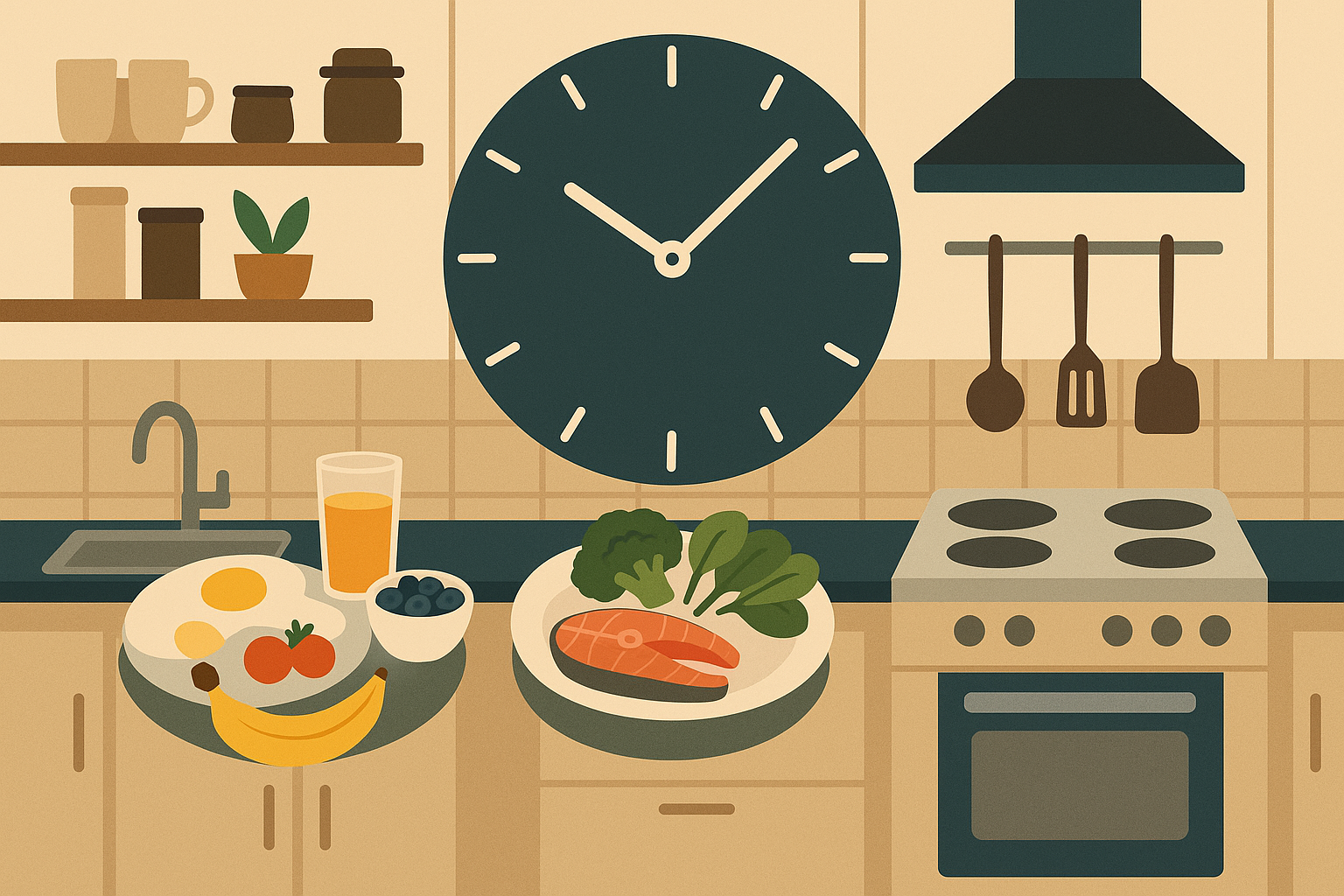
The Nutrient Timing Thing That Changes Everything
Ever wonder why some days you feel like a paleo superhero and others you’re dragging yourself through the day? It’s not in your head – it’s all about timing.
Your body has this internal clock that decides when it’s ready to absorb different nutrients. Ignore it, and you’re basically flushing money (and good food) down the drain.
I learned this the hard way after months of perfect paleo eating with mediocre results. Once I started paying attention to WHEN I ate certain foods, not just WHAT I ate, everything clicked.
For those interested in comprehensive approaches to wellness, our guide on how to boost immune system complements paleo timing strategies perfectly, while understanding intermittent fasting for women can enhance your paleo nutrient absorption windows.
Morning Protein: Your Secret Weapon
Here’s something that’ll blow your mind: that collagen powder you’re mixing into your afternoon smoothie? It works about 40% better if you have it right after waking up.
Your body is literally primed for protein in the morning. Growth hormones are high, your digestive system is ready to rock, and your cells are basically screaming for amino acids after fasting all night.
I started having my collagen smoothie within 30 minutes of getting up, followed by some bone broth about 45 minutes later. My joints stopped creaking like an old door, my skin got clearer, and I actually had energy in the mornings instead of feeling like a zombie.
Sarah from my neighborhood tried this after struggling with joint pain for months. Three weeks of morning collagen timing, and she was back to her weekend hiking routine. Same supplements, different timing – completely different results.
The paleo protocol is simple but specific: 20-25g of marine collagen within 30 minutes of waking, followed by grass-fed bone broth 45 minutes later. Track your changes over 4-6 weeks, and you’ll see why timing trumps quantity every time.
The Fat Timing Game
This one’s tricky because everyone tells you to just “eat healthy fats,” but your body doesn’t work that way. Different fats actually compete with each other for absorption.
That means your morning salmon and evening almonds might be fighting each other if they’re too close together. I know, it sounds crazy, but hear me out.
Omega-3s and omega-6s need about 4 hours between them to avoid this absorption wrestling match. So if you’re having fish for lunch, maybe save the nuts for an evening snack instead of right after.
| Fat Type | Optimal Timing | Separation Required | Co-factor Needed |
|---|---|---|---|
| Omega-3s (fish, algae) | Morning with breakfast | 4+ hours from omega-6s | Vitamin E |
| Omega-6s (nuts, seeds) | Afternoon snack | 4+ hours from omega-3s | Magnesium |
| Saturated fats (coconut oil) | Pre-workout | 2+ hours from other fats | None |
| Monounsaturated (olive oil) | With vegetables | Can combine with most | Vitamin K2 |
I started tracking this with a simple food journal (nothing fancy, just notes on my phone), and my energy levels became way more consistent throughout the day.
The Stress Problem Nobody Wants to Talk About
Here’s the uncomfortable truth: even if you eat perfectly, stress is literally blocking your body from using those nutrients.
When you’re stressed (and let’s be honest, who isn’t these days?), your body goes into survival mode. It’s so busy dealing with your crazy boss and traffic jams that it basically forgets how to absorb minerals properly.
I spent months wondering why my expensive supplements weren’t working until I realized I was checking emails while eating breakfast every morning. My cortisol was through the roof, and my body couldn’t absorb anything properly.
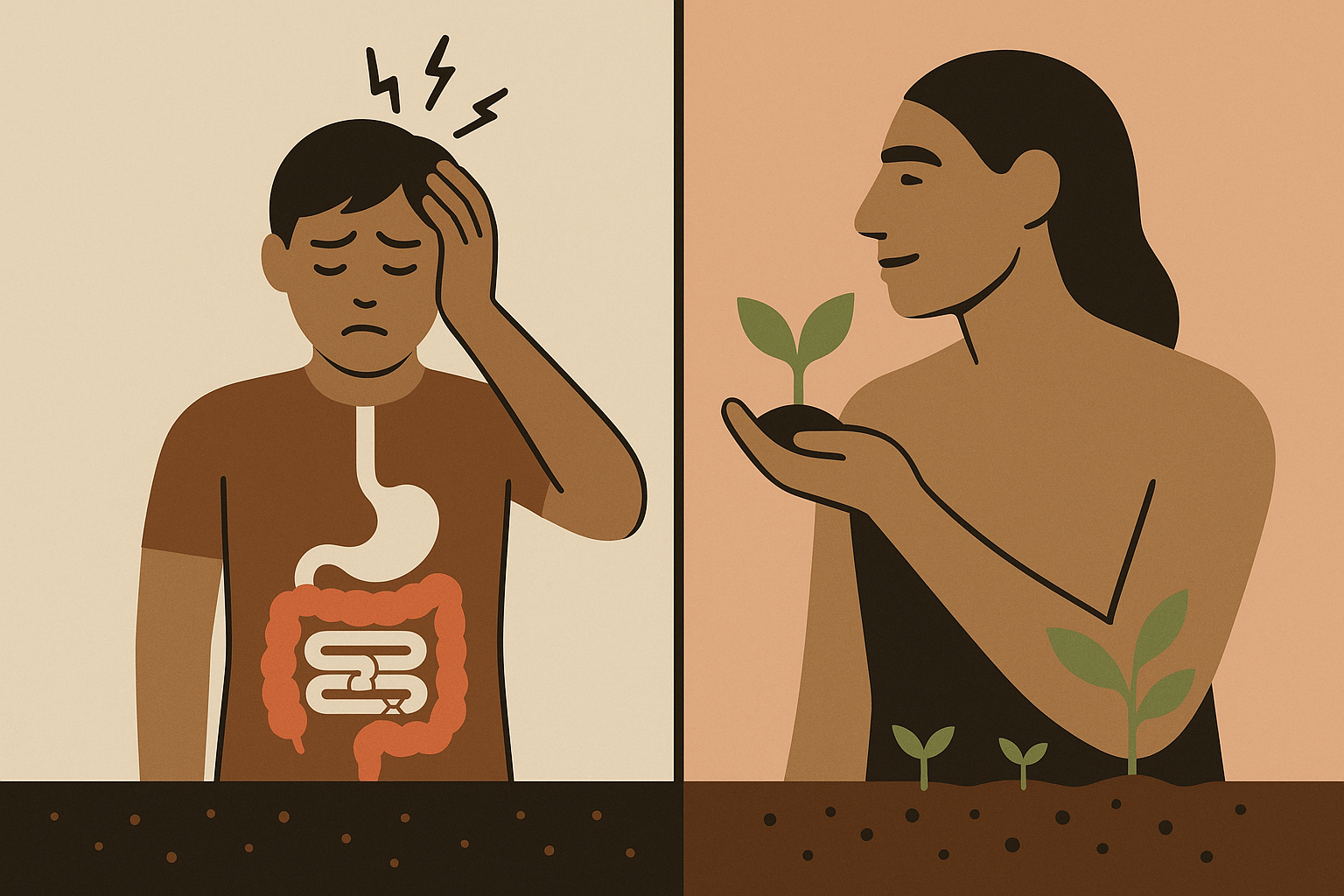
How Stress Hijacks Your Nutrition
Your body can’t tell the difference between a saber-tooth tiger and a work deadline. Both situations make it shut down “non-essential” functions like digestion to save energy for running away.
The problem? Most of us live in constant low-level stress, which means we’re constantly in “don’t digest food properly” mode.
Chronic cortisol elevation can reduce mineral absorption by up to 60%, making traditional paleo food lists insufficient without strategic supplementation. This stress-induced nutrient blocking affects magnesium, zinc, and iron absorption most severely, explaining why many paleo dieters experience fatigue and mood issues despite eating nutrient-dense foods.
I started doing just 10 minutes of deep breathing before meals – sounds hippie-dippy, I know, but it works. My digestion improved, I stopped feeling bloated after eating, and I actually started sleeping better.
Simple stress-busters that actually help:
- Put your phone in another room during meals
- Take five deep breaths before eating
- Go for a short walk after dinner instead of diving into Netflix
- Eat at the same times each day (your body loves routine)
- Practice 10 minutes of deep breathing before meals
- Create a calm eating environment without distractions
The Soil Problem We Can’t Ignore
Even our “perfect” paleo foods aren’t what they used to be. Modern farming has stripped a lot of nutrients from the soil, and our gut bacteria aren’t the same as our ancestors’ either.
Our great-grandparents got beneficial bacteria from the soil on their vegetables (gross but true). We wash everything with antibacterial soap and live in sterile environments, so we’ve lost that connection.
The disconnect between our gut microbiome and the soil microbiome of our food sources creates gaps in mineral processing that require targeted probiotic strains. This evolutionary mismatch means that even organic, grass-fed foods may not deliver their full nutritional potential without specific microbial support that our ancestors received naturally through their environment.
This isn’t about going back to eating dirty vegetables – it’s about understanding why targeted probiotics and certain preparation methods can help bridge that gap.
Your Genes Didn’t Get the Paleo Memo
This is where things get really interesting (and maybe a little frustrating). Your DNA might be working against standard paleo advice.
About 25% of people have genetic variations that make them process saturated fats differently. For these folks, all that grass-fed butter and coconut oil everyone raves about might actually increase inflammation.
Recent epigenetic research reveals that paleo diet effectiveness varies dramatically based on genetic markers that have evolved since the Paleolithic era, requiring personalized approaches to meal planning. Common genetic variants affecting fat metabolism and folate processing mean that standard paleo recommendations may be insufficient or even counterproductive for significant portions of the population.
I know someone who struggled for months on standard paleo, eating tons of red meat and coconut oil. Once she figured out she had APOE4 variants and switched to more fish-based fats, her joint pain disappeared and her energy skyrocketed.
Understanding your genetic variations is crucial, which is why exploring elimination diet protocols can help identify your personal triggers, while learning about food intolerance symptoms provides additional insight into how your unique genetics affect your paleo success.
The APOE4 Thing
If you carry APOE4 variants (and you might not even know it), that grass-fed ribeye everyone’s obsessing over could be working against you.
Your genetic makeup processes saturated fats differently, often causing inflammation instead of the healing everyone else experiences.
Individuals with APOE4 genetic variants process saturated fats differently, requiring modified paleo protocols that emphasize marine fats over terrestrial animal fats. This genetic variation affects approximately 25% of the population and can turn standard paleo fat recommendations into inflammatory triggers rather than healing foods.
The fix? Focus on fish, sardines, and other marine fats instead of land animal fats. It’s not about avoiding all red meat, but shifting the balance dramatically.
Michael, a software engineer in his 40s, had this exact issue. Six months of perfect paleo eating with lots of grass-fed beef, and his cholesterol was still high with persistent joint inflammation. Eight weeks after switching to a fish-heavy approach, his inflammation markers dropped 40%.
MTHFR Mutations (Yeah, It Sounds Like Swearing)
MTHFR mutations sound like something you’d mutter under your breath in traffic, but they actually explain why all that expensive organic spinach isn’t doing much for you.
If you have these genetic variations (up to 40% of people do), your body can’t properly convert the folate in leafy greens into its active form. You can eat kale salads all day and still be functionally deficient.
Common genetic variants affecting folate metabolism mean that standard paleo leafy green recommendations may be insufficient without specific preparation methods. MTHFR mutations prevent proper conversion of folate to its active form, requiring either methylated supplements or specific food preparation techniques to avoid deficiency despite eating folate-rich foods.
The workaround? Fermented vegetables work better than fresh ones for people with these variants. Sauerkraut becomes more valuable than fresh cabbage.
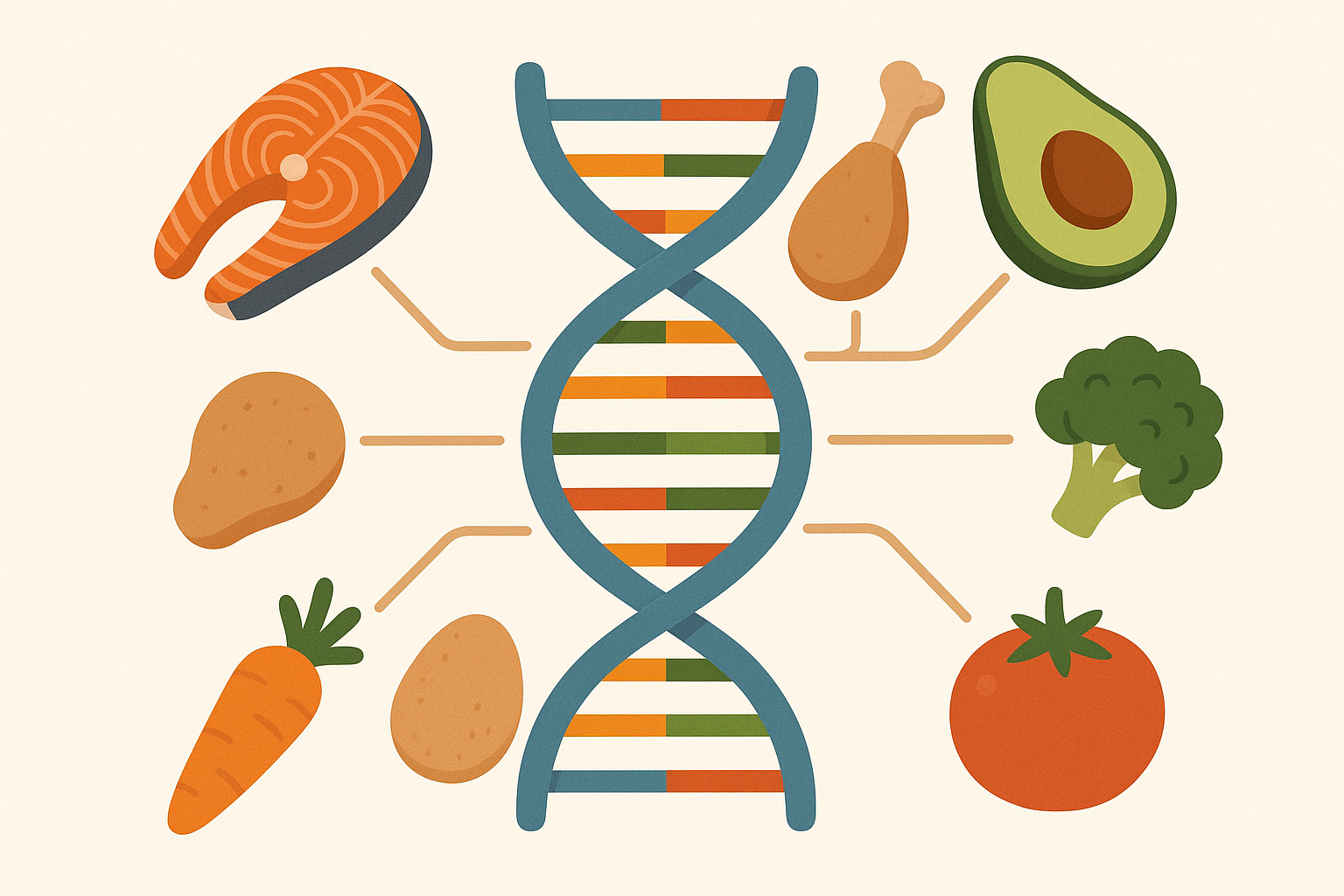
Hidden Inflammatory Foods in Your “Safe” Paleo Kitchen
This is the part that might make you want to throw this article across the room, but stick with me. Some foods that should be healing you might actually be causing problems.
It’s not your fault – modern immune systems are dealing with stuff our ancestors never encountered. Environmental toxins, chronic stress, and compromised gut barriers create reactions to foods that should be perfectly safe.
Even foods considered paleo-compliant can trigger inflammatory responses in modern bodies due to factors such as pesticide residues, cross-reactivity, and individual immune system variations that weren’t present in ancestral environments. Understanding these hidden triggers and implementing strategic elimination and preparation methods can resolve persistent inflammation that continues despite strict paleo adherence.
Recent recipe developments show that “Paleo-friendly granola bars may replace your go-to snack bars with 19 grams of protein” according to PureWow, indicating the growing sophistication of paleo food alternatives that address common inflammatory triggers while maintaining nutritional density.
The Sneaky Lectin Problem
Lectins are basically plants’ way of defending themselves, and they can mess with people who have compromised digestive systems.
Unfortunately, lots of paleo-approved vegetables are loaded with them. Tomatoes, peppers, and eggplants contain compounds that can trigger inflammation in some people, especially if you’re dealing with autoimmune issues.
Many vegetables and fruits on standard paleo food lists contain lectins that can cause inflammation in individuals with compromised gut barriers, requiring strategic preparation methods. Nightshades and high- FODMAP vegetables affect significant portions of the population, but proper preparation techniques can often neutralize these compounds while preserving nutritional benefits.
Nightshade Sensitivity: The Hidden Trigger
Nightshades can be sneaky troublemakers. The compounds in tomatoes, peppers, and eggplants can cross-react with your immune system, causing inflammation that feels like autoimmune flares.
The tricky part? Symptoms can show up 24-72 hours later, so it’s hard to connect them to what you ate.
Tomatoes, peppers, and eggplants contain glycoalkaloids that affect individuals differently based on gut permeability and autoimmune status. These compounds can trigger joint pain, skin reactions, and digestive issues in sensitive individuals, making elimination and systematic reintroduction crucial for identifying personal tolerance levels.
If you’re experiencing joint pain, skin issues, or digestive problems that won’t go away, try eliminating nightshades for 30 days. Then add them back one at a time with 4-day breaks between each one.
Some people can handle small amounts occasionally, others need to avoid them completely. There’s no shame in either approach – it’s about finding what works for YOUR body.
High-FODMAP Vegetables: When Healthy Foods Hurt
Garlic and onions are paleo staples, but they’re also high-FODMAP foods that can cause serious digestive drama for about 30% of people.
If you’re dealing with bloating, gas, and stomach pain despite eating “perfectly,” these might be your culprits.
Onions, garlic, and cruciferous vegetables can cause digestive distress in up to 30% of people, requiring modified preparation or temporary elimination. These high-FODMAP foods ferment in the digestive system, causing bloating, gas, and intestinal inflammation that can undermine the healing benefits of a paleo approach.
Cruciferous vegetables like broccoli and Brussels sprouts can also cause issues. They’re not “bad” foods, but they might not be right for you right now.
Try using garlic and onion oils instead of the whole vegetables to get flavor without the FODMAP overload. Ferment cruciferous vegetables before eating them to make them easier to digest.
Cross-Reactivity: When Your Immune System Gets Confused
Here’s a mind-bender: your immune system can mistake paleo-approved foods for the grains and dairy you eliminated.
Coffee and chocolate are common culprits. Their proteins can look similar enough to gluten that your body freaks out and triggers the same inflammatory response you were trying to avoid.
The immune system can mistake paleo-approved foods for eliminated grains and dairy due to molecular mimicry, causing continued inflammation despite strict adherence. Coffee, chocolate, certain nuts, and even some grass-fed meats contain proteins that can trigger the same immune response as gluten or casein in sensitive individuals.
Some nuts and even certain grass-fed meats can cross-react with dairy proteins. It’s not common, but for people with severe sensitivities, it explains why symptoms persist despite perfect paleo adherence.
Research indicates that weight loss levels out after initial success, with most initial weight loss being water weight rather than fat loss according to Woman’s World, suggesting that addressing cross-reactivity and hidden inflammatory triggers becomes crucial for sustained results beyond the initial paleo honeymoon period.
Coffee: The Gluten Imposter
If you’ve been gluten-free for months but still having issues, your morning coffee might be the sneaky culprit.
Coffee’s protein structure can fool your immune system into thinking you’re drinking a wheat smoothie. I know, it’s heartbreaking news for coffee lovers.
Coffee, chocolate, and certain nuts can trigger the same immune response as gluten in sensitive individuals due to similar protein structures. This cross-reactivity can maintain inflammation and digestive issues even after complete grain elimination, requiring temporary avoidance of these otherwise paleo-compliant foods.
The same goes for chocolate – those proteins can cross-react with gluten antibodies in sensitive people.
Try eliminating coffee and chocolate for 60 days (I know, I know), then reintroduce them one at a time to see if they’re causing problems. Some people can handle small amounts, others need to find alternatives.
Dairy Cross-Reactive Proteins in Unexpected Places
Even grass-fed beef can contain proteins that cross-react with casein antibodies. This is rare but devastating for people with severe dairy sensitivities who can’t understand why their symptoms persist despite eliminating all obvious dairy sources.
Some grass-fed meats and even certain vegetables contain proteins that cross-react with casein, prolonging dairy-related inflammation. This cross-reactivity can affect individuals with severe dairy sensitivities, making it necessary to temporarily eliminate these foods during healing phases.
Some vegetables and herbs contain proteins with similar structures to dairy proteins. Again, this affects a small percentage of people, but for those individuals, it’s the missing piece of their paleo healing puzzle.
Eliminate potential cross-reactive foods for 60 days while monitoring inflammatory markers and symptoms. Reintroduce systematically with detailed symptom tracking to identify your personal tolerance levels.

Metabolic Flexibility: The Game-Changer Most Paleo Plans Miss
Most paleo approaches treat carbs like the enemy, but here’s the thing: your body should be able to burn both fats and carbs efficiently, switching between them based on what’s available.
Modern life has broken this switching mechanism. Constant snacking, chronic stress, and sitting all day have left most of us stuck in sugar-burning mode, unable to access fat stores efficiently.
Traditional paleo meal plans often fail because they don’t address the modern challenge of metabolic inflexibility—the inability to efficiently switch between burning fats and carbohydrates for fuel. Strategic carbohydrate cycling using paleo-approved sources can restore metabolic flexibility while maintaining anti-inflammatory benefits, leading to better energy, improved recovery, and sustainable long-term results.
The good news? Strategic carb cycling within paleo can fix this while keeping all the anti-inflammatory benefits.
Nutrition experts are recognizing that “the main benefit is minimizing the intake of processed foods, which many Americans can stand to do” according to Woman’s World, but successful long-term paleo requires addressing metabolic flexibility rather than just food elimination.
Seasonal Carb Cycling That Makes Sense
Your hormones expect seasonal variation in carb availability. Constant low-carb or constant high-carb approaches can mess with your thyroid, sex hormones, and sleep over time.
I started eating more paleo carbs (sweet potatoes, fruits) during late summer and early fall, then backing off during winter months. My energy became more stable, and my sleep improved dramatically.
Strategic carbohydrate cycling using paleo-approved sources can optimize hormonal balance and metabolic function while maintaining the anti-inflammatory benefits of ancestral eating. This approach mimics natural seasonal availability patterns and post-workout recovery needs, creating metabolic flexibility that supports long-term health and sustainable energy levels.
Higher carbs during harvest season support leptin production and keep your metabolism humming. Lower carbs during winter can improve insulin sensitivity and promote cellular cleanup.
Track your energy and sleep throughout these cycles. Most people find their bodies respond really well to this natural rhythm.
| Season | Carb Level | Primary Sources | Duration | Benefits |
|---|---|---|---|---|
| Spring | Moderate (75-100g) | Sweet potatoes, berries | 8-10 weeks | Metabolic awakening |
| Summer | Higher (100-150g) | Fruits, squash, roots | 12-14 weeks | Energy, recovery |
| Fall | Moderate (50-75g) | Apples, pumpkin, roots | 6-8 weeks | Preparation phase |
| Winter | Lower (25-50g) | Minimal fruits, greens | 10-12 weeks | Fat adaptation, cleanup |
Post-Workout Carb Strategy
Here’s when strategic carb intake provides maximum benefit with minimal metabolic disruption: right after your workout.
Your muscles are primed to absorb glucose without triggering big insulin responses. It’s like a metabolic window where carbs actually help instead of hurt.
The timing and type of paleo carbohydrates after exercise can dramatically impact recovery and metabolic adaptation. Strategic post-workout carbohydrate intake supports muscle protein synthesis, reduces cortisol elevation, and improves training adaptations while maintaining metabolic flexibility.
I have 30-50g of paleo carbs (usually dates or sweet potato) within 30 minutes of working out. This supports recovery without messing with my metabolic flexibility goals.
Lisa, a CrossFit athlete, was struggling with recovery on strict low-carb paleo. Once she started having sweet potato after workouts while keeping carbs low on rest days, her performance improved 15% and recovery time decreased significantly.
Intermittent Fasting That Actually Works
Intermittent fasting and paleo can be powerful together, but most people implement fasting in ways that actually harm their health.
Cramming all your food into a tiny eating window without proper planning can lead to nutrient deficiencies and metabolic slowdown.
Combining time-restricted eating with paleo principles can amplify benefits, but requires careful attention to nutrient density and timing to avoid deficiencies. Compressed eating windows and extended fasting protocols must be implemented strategically to support rather than compromise metabolic flexibility and overall health outcomes.
Start with 12-hour overnight fasts (7 PM to 7 AM) and gradually extend to 16-18 hours. This lets your digestive system adapt without overwhelming it during eating windows.
Understanding proper fasting techniques is crucial, which is why our comprehensive guide on intermittent fasting for women provides essential insights for paleo practitioners looking to optimize their metabolic flexibility.
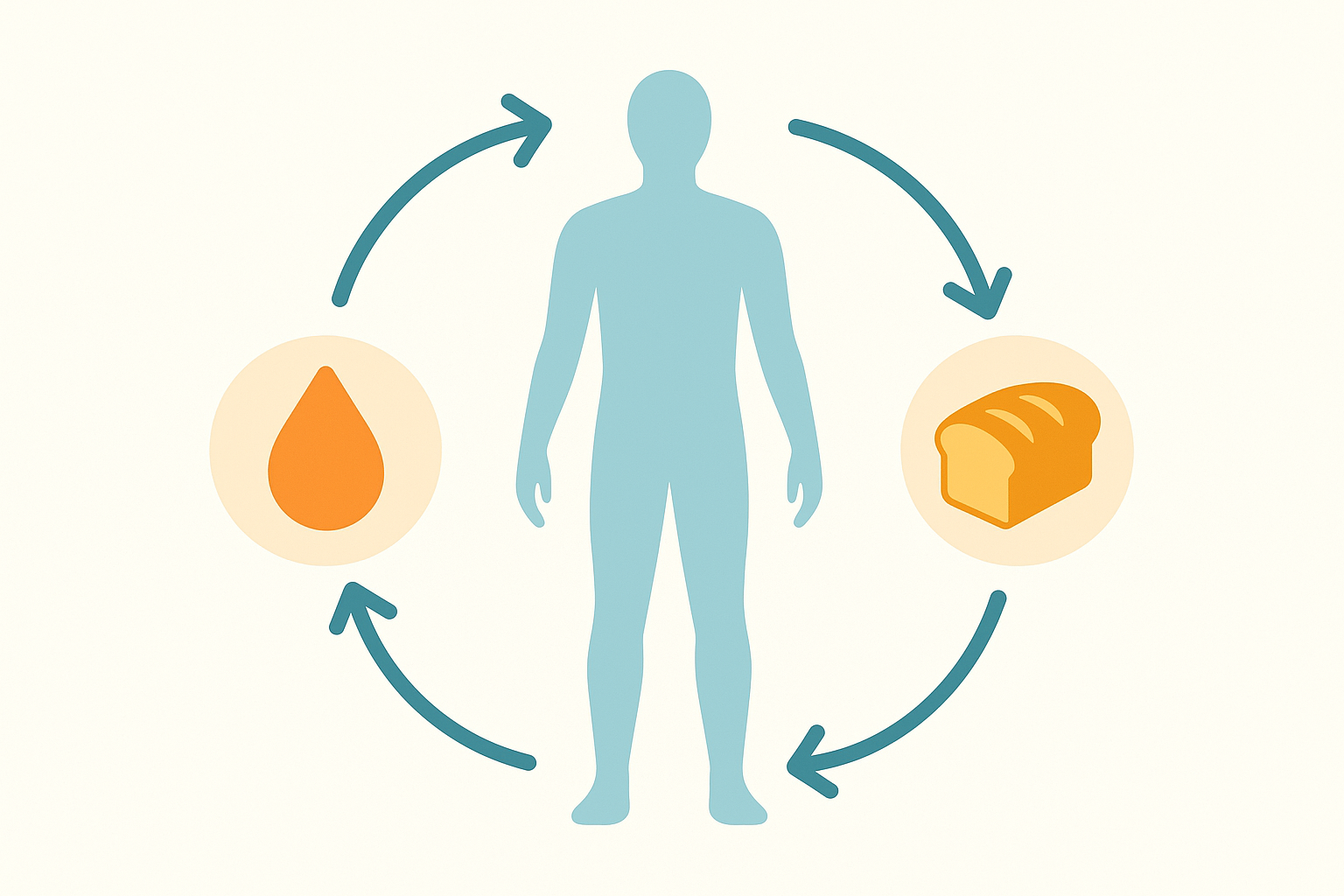
Compressed Eating Windows Without Nutrient Compromise
Your first meal after fasting should focus on easily absorbed proteins and fats rather than huge salads that are hard to digest.
Eating all paleo meals within 6-8 hour windows can improve insulin sensitivity but may compromise nutrient absorption if not properly planned. Strategic meal composition and timing within compressed eating windows ensures adequate nutrient intake while maintaining the metabolic benefits of time-restricted eating.
Intermittent Fasting Progression Checklist:
- Week 1-2: 12-hour overnight fast (7pm-7am)
- Week 3-4: Extend to 14 hours (7pm-9am)
- Week 5-6: Progress to 16 hours (7pm-11am)
- Week 7+: Experiment with 18-hour windows if tolerated
- Monitor energy, sleep, and mood throughout progression
- Adjust timing based on workout schedule and lifestyle
Extended Fasting for Metabolic Reset
24-48 hour fasts can provide powerful metabolic resets, but they’re not appropriate for everyone and require careful implementation. The refeeding phase is just as important as the fasting phase for maximizing benefits.
Extended fasts of 24-48 hours can reset metabolic flexibility but require strategic refeeding with specific paleo foods to maximize benefits. Extended fasting protocols should be implemented gradually with careful attention to individual tolerance levels and proper preparation for both the fasting and refeeding phases.
Start with shorter fasts and gradually work up to longer periods. Monitor energy, mood, and biomarkers throughout the process. Some people thrive on extended fasts, while others do better with shorter, more frequent fasting windows.
Building a Paleo Lifestyle That Actually Sticks
This is where most paleo approaches completely miss the mark. They focus on what to eat but ignore how to actually live this way in the real world.
Social pressure, convenience culture, and decision fatigue kill more paleo attempts than food cravings ever will.
The failure rate of paleo meal plans often stems not from the diet itself, but from inadequate preparation for the social, emotional, and logistical challenges of maintaining ancestral eating patterns in modern environments. Success requires strategic environmental design, social support systems, and practical infrastructure that most meal plans completely ignore.
Understanding that “paleo naturally emphasizes eating grass-fed protein, moderate carb balance, a mix of healthy fat (like nuts and seeds), and decreases the general number of processed foods” according to Trifecta Nutrition helps explain why environmental design becomes crucial – you need systems that make these specific food choices convenient and accessible.
Environmental Design That Sets You Up to Win
Your environment shapes your choices more than willpower ever will. If healthy options aren’t convenient, you’ll default to whatever’s easiest when you’re tired and stressed.
Creating physical and social environments that support paleo choices requires strategic planning that most meal plans ignore, leading to decision fatigue and eventual abandonment. Kitchen infrastructure optimization and social support network development provide the foundation for long-term success by removing barriers and creating supportive systems.
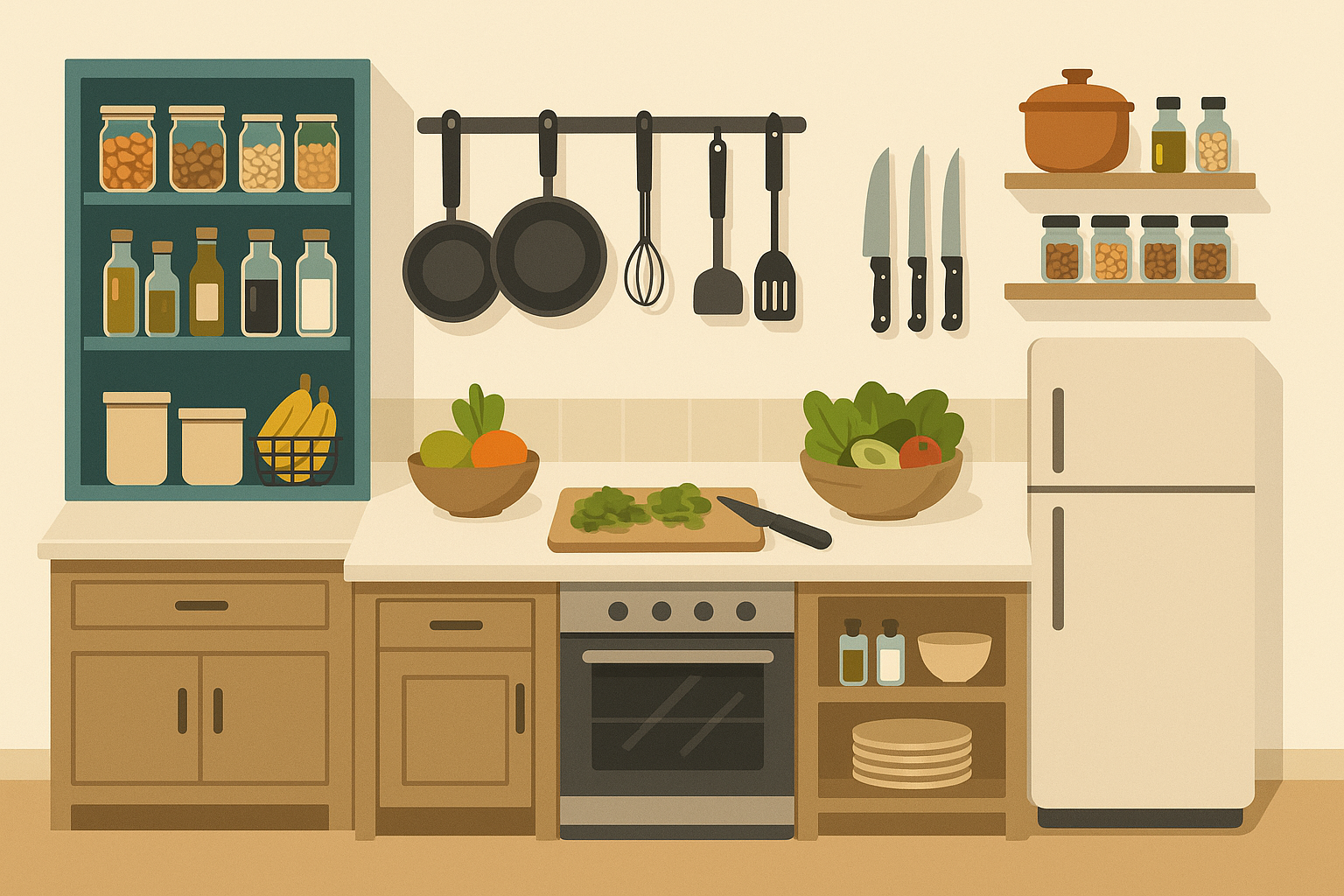
Kitchen Setup That Makes Paleo Easy
Your kitchen setup determines whether paleo feels effortless or exhausting.
Invest in tools that make prep faster: a good food processor for cauliflower rice, quality storage containers for batch cooking, and dedicated spaces for coconut flour and other paleo staples.
The tools, storage systems, and food preparation workflows can make the difference between sustainable paleo living and constant struggle. Strategic kitchen setup reduces decision fatigue, streamlines meal preparation, and creates systems that support consistent paleo choices even during busy or stressful periods.
Design batch-cooking workflows for busy weeks. Spend 2-3 hours on Sunday preparing base ingredients that can be mixed and matched all week. This prevents the 6 PM panic that leads to ordering pizza.
Essential tools that make a difference:
- High-powered food processor for cauliflower rice and nut flours
- Glass storage containers in multiple sizes for batch cooking
- Sharp knives and cutting boards dedicated to different food types
- Slow cooker or Instant Pot for easy bone broth and stews
- Spiralizer for vegetable noodles
- Quality cast iron or stainless steel cookware
- Designated pantry space for coconut products, nuts, and seeds
- Freezer space for bulk meat purchases
Social Support That Actually Helps
Social situations will test your paleo commitment more than any craving. Having people who understand your choices makes all the difference.
Join local paleo or ancestral health groups, even if they’re small. Online communities are great, but in-person connections provide real accountability and practical tips.
Building relationships with others who understand and support paleo principles can provide crucial accountability and problem-solving resources. Social eating situations and family dynamics often derail paleo efforts, making it essential to develop strategies and support systems that help navigate these challenges successfully.
Find paleo-friendly restaurants and build relationships with chefs who get it. Having go-to places removes the stress of navigating unfamiliar menus under pressure.
Educate family members without being preachy. Focus on how paleo makes you FEEL rather than trying to convert everyone. Develop simple scripts for handling social eating situations.
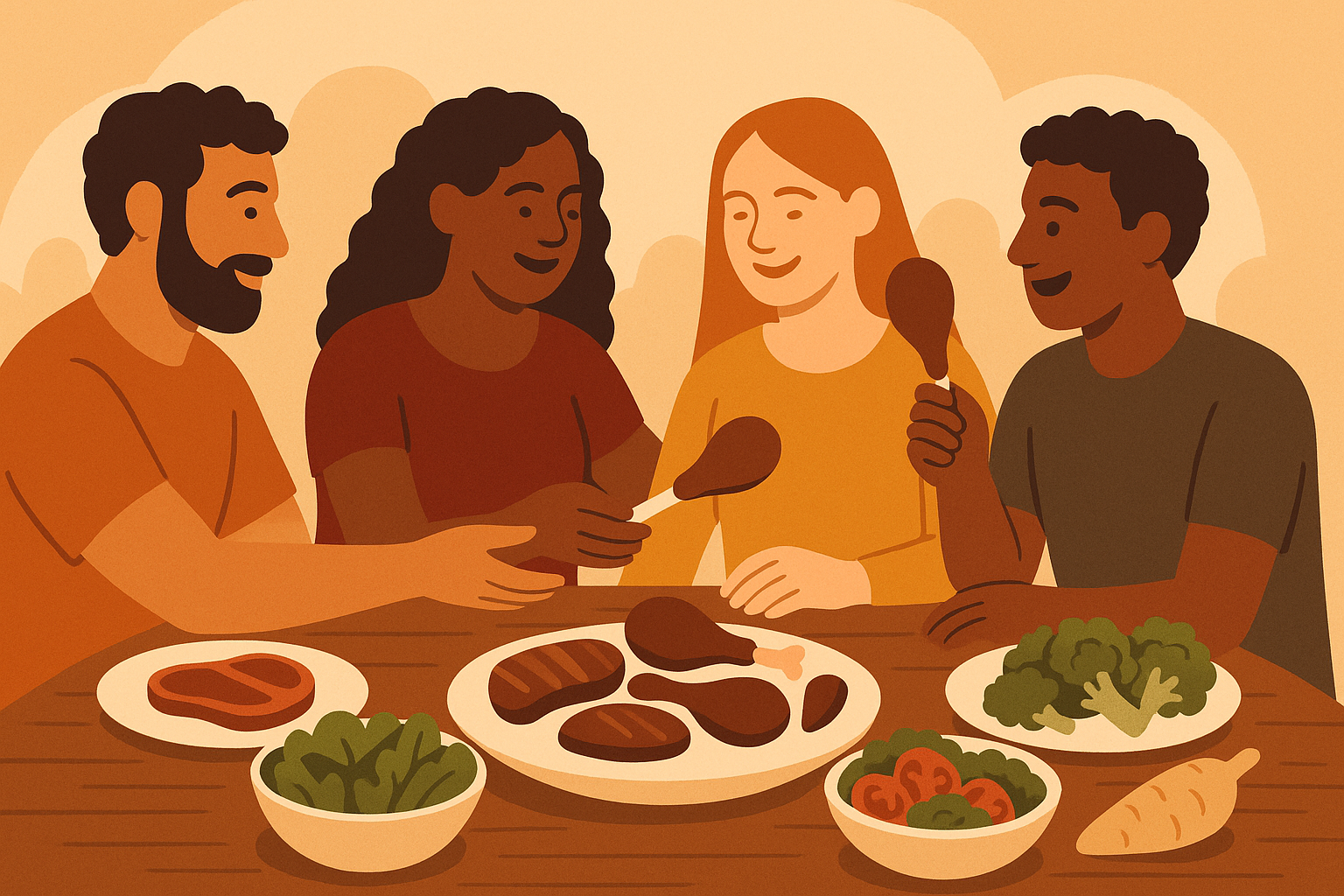
Creating Your Personal Paleo System Without Going Broke
Budget concerns kill more paleo attempts than any other factor. The perception that paleo is expensive becomes reality when people focus on premium ingredients without understanding cost-effective strategies.
Most paleo meal plans fail because they don’t account for real-world constraints such as budget limitations, time scarcity, and the need for family-friendly options that satisfy both paleo and non-paleo household members. Successful paleo practitioners use flexible frameworks that adapt to seasonal availability, budget fluctuations, and life circumstances while maintaining nutritional targets.
Budget Strategies That Actually Work
Organ meats are nutritional powerhouses that cost a fraction of muscle meats. Liver, heart, and kidney provide more nutrients per dollar than any other paleo food.
Start small – mix ground organ meat into regular ground beef if the taste is challenging initially.
Organ meats, seasonal vegetables, and strategic bulk purchasing can reduce paleo meal costs by 40-60% compared to conventional “premium” approaches. Building relationships with local farmers and investing in proper storage equipment creates long-term cost savings while improving food quality and nutritional density.
Buy seasonal vegetables in bulk for fermentation. A 20-pound box of cabbage in fall can provide sauerkraut for months at a fraction of store prices.
Invest in a chest freezer for bulk grass-fed meat purchases. Buying directly from farmers reduces costs dramatically. Split purchases with friends if storage is limited.
The Johnson family reduced their paleo grocery budget from $800 to $480 monthly by buying a quarter cow ($6/lb vs $12/lb retail), purchasing seasonal vegetables in bulk, and investing in freezer storage.
The 28-Day Adaptive Meal Planning System
Rigid paleo meal plans set you up for failure because life doesn’t follow a predictable schedule. Adaptive frameworks give you structure while allowing flexibility for real-world constraints and changing circumstances.
Rather than rigid weekly meal plans, successful paleo practitioners use flexible frameworks that adapt to seasonal availability, budget fluctuations, and life circumstances while maintaining nutritional targets. This system focuses on teaching principles rather than prescriptive menus, allowing for personal adaptation and long-term success.
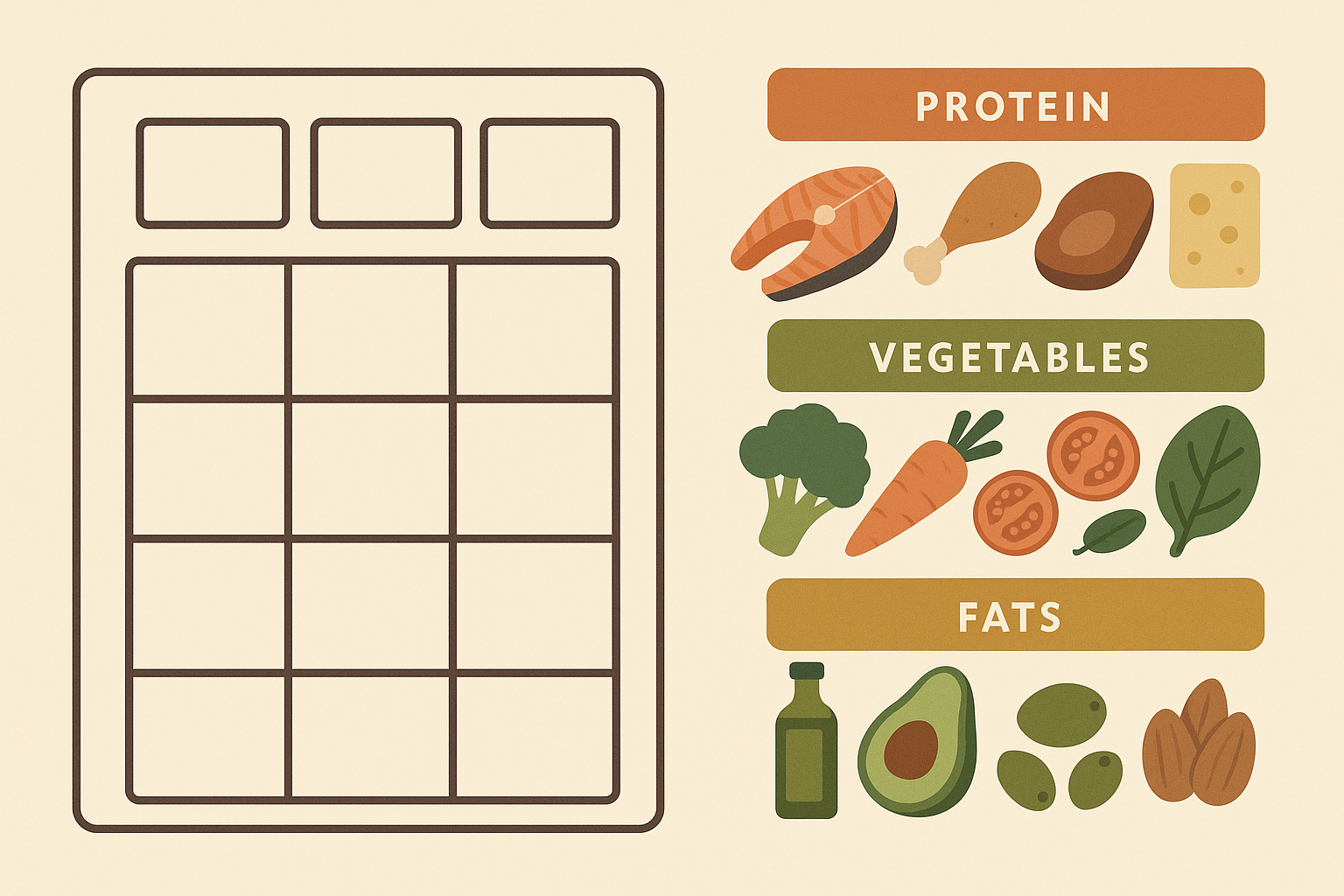
Batch Cooking That Prevents Burnout
Batch cooking isn’t about making the same meal 20 times – it’s about preparing versatile ingredients that combine in multiple ways.
Prepare large batches of bone broth, shredded meats, and roasted vegetables that mix and match with different seasonings. One slow-cooked pork shoulder becomes tacos, salad protein, soup base, and stir-fry filling.
Strategic meal preparation focusing on versatile base ingredients can create 15-20 different meals from 4-5 cooking sessions per month. This approach emphasizes efficiency and variety while maintaining nutritional quality and reducing the daily decision fatigue that leads to meal plan abandonment.
Create 15-minute assembly protocols for busy weeknights. Pre-cooked proteins, pre-chopped vegetables, and simple sauces combine quickly without compromising nutrition.
Weekly template:
- Sunday: Prepare 2 proteins (slow cooker pork, roasted chicken)
- Sunday: Roast 3-4 different vegetables in bulk
- Sunday: Make bone broth in pressure cooker (2 hours vs 24)
- Monday: Prep fresh vegetables for easy assembly
- Wednesday: Mid-week protein prep if needed
- Freeze half of everything for following week
- Label containers with contents and reheat instructions
Free Paleo Meal Plan Framework
Free paleo meal plan resources often fail because they’re too rigid or too vague. The sweet spot is providing enough structure to eliminate decision fatigue while allowing enough flexibility for personal adaptation.
A sustainable approach to free paleo meal planning focuses on teaching principles rather than prescriptive menus, allowing for personal adaptation and long-term success. Template-based planning and modernized caveman diet concepts provide structure while maintaining flexibility for individual needs, preferences, and circumstances.
Template-Based Planning for Infinite Variety
Master 5 protein preparation methods: roasted, slow-cooked, grilled, pan-seared, and ground meat preparations. These work with any protein and provide endless meal variations.
Using protein + vegetable + healthy fat templates with seasonal rotation creates infinite variety without decision fatigue. This approach teaches fundamental principles that can be adapted to any cuisine, budget, or time constraint while maintaining nutritional adequacy and meal satisfaction.
Learn 10 vegetable cooking techniques: roasting, sautéing, steaming, fermenting, raw preparations, soups, and stir-fries. Different methods create completely different flavors from the same vegetables.
Rotate through 6-8 healthy fat sources: olive oil, coconut oil, avocado, nuts, seeds, grass-fed butter, and animal fats. Each fat source brings different flavors and nutritional profiles to your meals.
Create simple seasoning combinations for variety: Mediterranean herbs, Asian spices, Mexican seasonings, Indian curry blends. The same ingredients taste completely different with different seasonings.
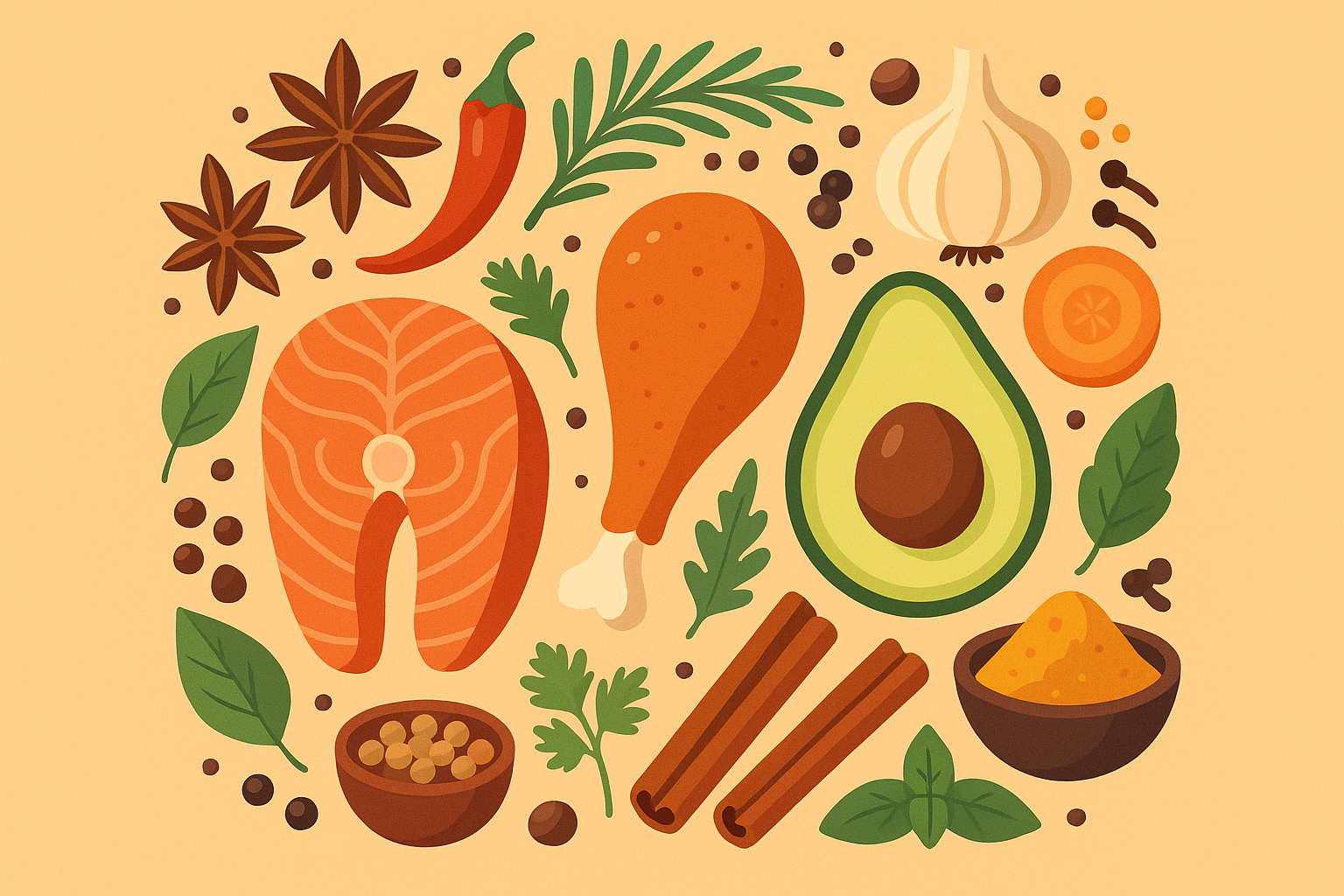
Modernizing Caveman Diet Concepts for Real Life
Traditional caveman diet advice often ignores modern realities like food safety, time constraints, and global food availability. Smart modernization keeps the principles while adapting for real life.
Updating traditional “caveman diet” concepts with modern food safety, preparation efficiency, and nutritional optimization creates practical approaches that work in contemporary life. This modernization incorporates global paleo-friendly cuisines, time-saving tools, and convenience strategies while maintaining the core principles of ancestral eating.
Apply modern food safety to ancestral methods. Proper temperature control and safe fermentation practices prevent foodborne illness while maintaining traditional benefits.
Use time-saving tools like pressure cookers to make ancestral prep practical. A pressure cooker creates bone broth in 2 hours instead of 24 – making this nutritional powerhouse accessible for busy families.
Incorporate global paleo-friendly cuisines for variety. Traditional diets worldwide offer countless paleo-compatible preparations that prevent boredom.
Balance convenience with nutrition. Some shortcuts help you stay consistent, others compromise the benefits you’re seeking. Learn to tell the difference.
For those seeking comprehensive digestive support alongside their paleo journey, understanding simple ways to beat bloat and improve digestion can enhance your paleo success, while exploring drinking vinegars for gut health provides additional tools for optimizing your ancestral eating approach.
Organic Authority’s premium collagen products can bridge the gap between ideal paleo nutrition and real-world constraints. Their bioavailable collagen peptides provide the morning protein synthesis benefits we discussed earlier, while their digestive support supplements help address the mineral absorption challenges that plague modern paleo practitioners. When you’re building sustainable paleo systems, having reliable, science-backed supplements that complement your food choices rather than replace them can make the difference between short-term success and long-term transformation.
Putting It All Together
Look, this might feel overwhelming right now. You thought you finally found THE diet, and here I am telling you it’s more complicated than just avoiding grains and dairy.
But here’s the thing – once you get this stuff dialed in, paleo becomes way easier, not harder.
Successful paleo meal planning isn’t about perfect adherence to food lists – it’s about understanding how your modern body processes ancestral foods and creating sustainable systems that work with your genetics, lifestyle, and environment. The future of paleo lies in personalized approaches that combine ancestral wisdom with modern science, practical implementation strategies, and realistic expectations for long-term success.
You don’t have to figure everything out overnight. Pick one thing – maybe the morning protein timing or stress reduction during meals – and try it for a few weeks. Small changes often create surprisingly big results.
Your paleo success depends more on creating sustainable systems than achieving perfect adherence. Focus on building kitchen infrastructure, developing social support networks, and mastering flexible frameworks that adapt to real-world constraints. The goal isn’t to recreate the exact diet of our ancestors, but to apply ancestral principles in ways that optimize your modern biology and lifestyle.
The paleo diet that works isn’t the one that looks perfect on Instagram. It’s the one you can actually follow while feeling energized, satisfied, and healthy in your real life.
Your paleo journey should evolve with you. What works during a stressful period might need adjusting when life calms down. What works in summer might shift in winter. That’s not failure – that’s intelligence.
Remember that paleo is a starting point, not a destination. Use these principles to discover what works for your unique body, circumstances, and goals. The most successful paleo practitioners are those who view it as a framework for experimentation rather than a rigid set of rules to follow blindly. Your paleo meal plan should evolve with you, adapting to changing needs while maintaining the core principles that make this approach so powerful.
The most successful paleo people I know treat it as a framework for experimentation, not rigid rules to follow blindly. They understand their genetics, time their nutrients, identify their personal triggers, and build systems that make healthy choices effortless.
Start where you are. Use what resonates. Adjust as you learn. Your body will tell you what’s working – you just need to listen.
The goal isn’t to recreate some perfect ancestral diet. It’s to apply ancestral wisdom in ways that optimize your modern life. And honestly? That’s way more interesting than just following another meal plan.
Remember: progress over perfection, consistency over intensity, and systems over willpower. That’s how you build a paleo approach that actually sticks.
